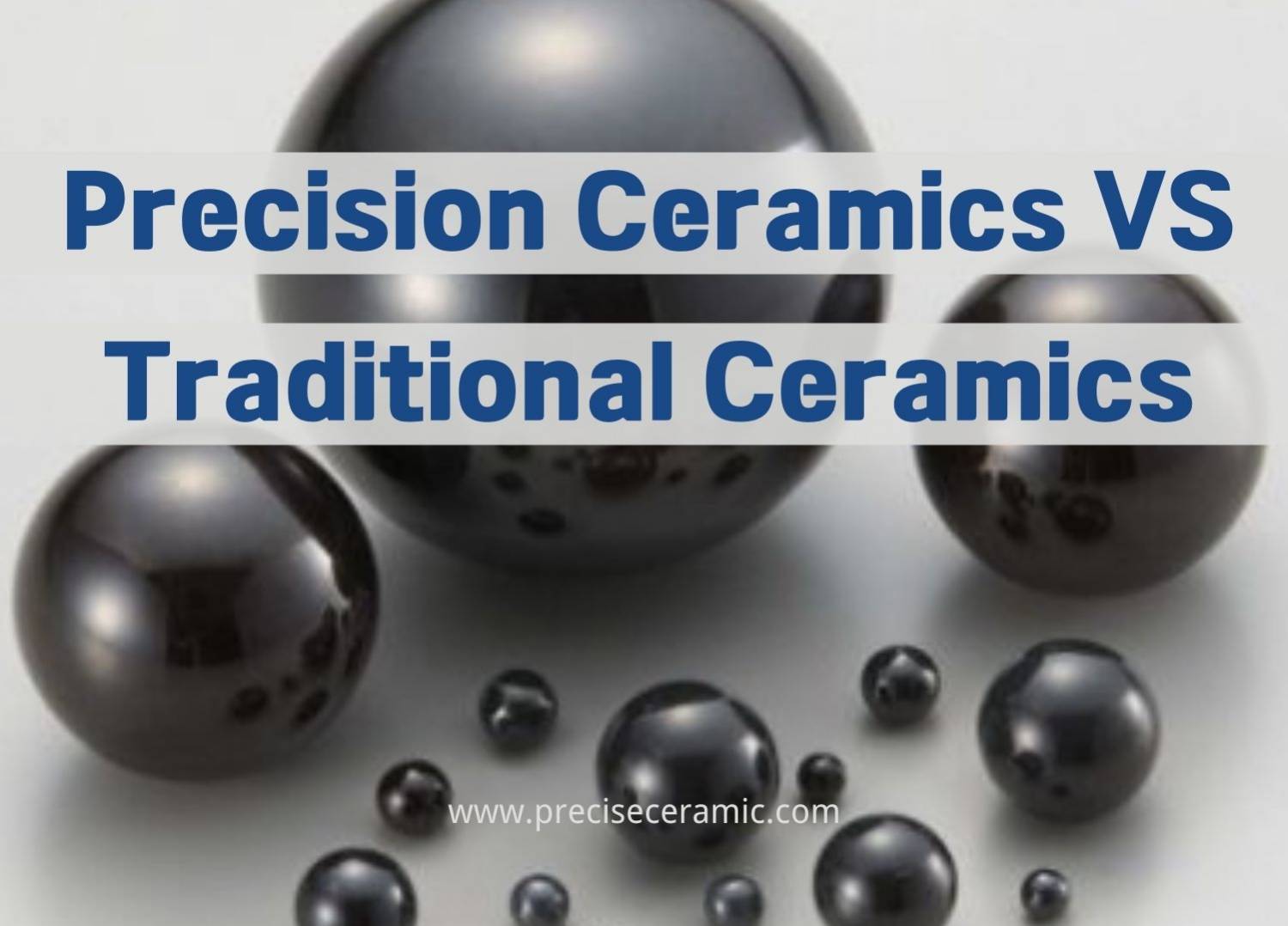Do you have any questions? Email Us
[email protected]

Ceramic material is an inorganic non-metallic material made by forming and sintering natural or synthetic compounds at high temperatures. It has both the common advantages of metal materials and polymer materials, and its fragility has been greatly improved in the process of continuous modification. Ceramic materials are unique in the field of materials because of their excellent properties. In this article, we'll introduce two main types of ceramics: precision ceramics and traditional ceramics.
Precision ceramics, also named advanced ceramics, are products made from high purity inorganic compounds with developed workmanship. Through specific processes and strict control of ingredients, precision ceramics enjoy natural bright surfaces and exact sizes. With high-temperature sintering, precision ceramics gain qualities such as high strength, toughness, stiffness, and anti-corrosion. Their special structures and chemical compositions gift precision ceramics diverse functions, like conduction, insulation, magnetism, permeability and other combined functions. Precision ceramics can work as semiconductors and play an important role in chemical and biological products.

Precision ceramics can be divided into two categories by chemical composition. One is pure oxide ceramics, such as aluminum oxide, zirconium oxide, magnesium oxide, beryllium oxide, thorium dioxide, etc., and the other is non-oxide ceramics such as carbide, boride, nitride and silicified. It can also be divided into high-temperature ceramics, super-hard ceramics, high toughness ceramics, semiconductor ceramics, electrolytic ceramics, magnetic ceramics, conductive ceramics, etc. by their performances and characteristics. With the continuous improvement of composition, structure, and technology, precision ceramics emerge in endlessly.
Traditional ceramics materials are derived from common, naturally occurring raw materials such as clay minerals and quartz sand. Through industrial processes that have been practiced in some form for centuries, these materials are made into such familiar products as china tableware, clay brick and tile, industrial abrasives and refractory linings, and Portland cement.

Traditional ceramic objects are almost as old as the human race. Naturally occurring abrasives were undoubtedly used to sharpen primitive wood and stone tools, and fragments of useful clay vessels have been found dating from the Neolithic Period, some 10,000 years ago. Not long after the first crude clay vessels were made, people learned how to make them stronger, harder, and less permeable to fluids by burning. These advances were followed by structural clay products, including brick and tile. Clay-based bricks, strengthened and toughened with fibers such as straw, were among the earliest composite materials.
Traditional ceramics use natural minerals without processing, such as clay, quartz, feldspar and so on. However, the raw materials of precision ceramics are synthetic high-quality powders, which is a breakthrough in traditional ceramic clay. The “well-selected raw materials” endow precision ceramics with more good qualities and functions.
The structure of traditional ceramic is decided by the composition of the clay. The ceramics from different origins have various textures. Because of the use of different raw materials, traditional ceramics tend to have more complicated chemical structures and compositions. Besides, traditional ceramic has more impurities both in type and quantity. The microstructure of traditional ceramics is not even with multiple pores. Therefore, it’s harder to control the quality of traditional ceramic products. The chemical structures of precision ceramics are simple and clear with high purity. Moreover, precision ceramics are made from manually calculated ingredients, which means the raw materials are under control. Therefore, the microstructure of advanced ceramics is generally uniform and fine.
The minerals for traditional ceramics can be directly used for wet moldings, such as plastic molding of mud or grouting molding of the slurry. The products need no more processing after sintering with the temperature between 1652℉ to 2552℉. However, dry molding and wet molding can only be suitable for precision ceramics when organic additions are added to the raw materials of high-purity powders. Precision ceramics still need more processing after firing under a higher sintering temperature, from 2192℉ to 3992℉according to different materials. From the perspective of preparation procedures, precision ceramics overcome the limits of traditional ceramics. Moreover, there are many advanced technologies used in precision ceramics, such as vacuum sintering, protective atmosphere sintering, hot pressing, hot and high-temperature isostatic pressing, and so on.
With the above differences, traditional ceramics and precision ceramics own different functions. Precision ceramics have better performances in quality as well as new applications that traditional ones don’t have. Traditional ceramic materials are mainly produced for daily use or work as building materials. While precision ceramics have multiple physical and mechanical properties, such as high strength, high hardness, wear resistance, corrosion resistance, high-temperature resistance, and thermal shock resistance. Besides, precision ceramics also have great potential for usage in heat, light, sound, electricity, magnetism, chemistry, biology and other aspects.
To some degree, the performances of precision ceramics are far more efficient than those of modern high-quality alloys and polymer materials. Thus, precision ceramics play a leading role in the revolution of new materials. Meanwhile, precision ceramics have a wide range of applications in many industries, like petroleum, chemical, steel, electronics, textile, automobile industries, as well as aerospace, nuclear and military, and so on. In recent decades, the application and development of ceramic materials have been very rapid. As one of the most potential developing materials after metal materials and polymer materials, ceramic materials have significantly superior comprehensive performance in various aspects of the metal materials and polymer materials currently used. If you want to know more about precision ceramic materials, we would like to recommend you to visit Advanced Ceramic Materials for more information.
Reference: Differences Between Precise Ceramics and Traditional Ceramics